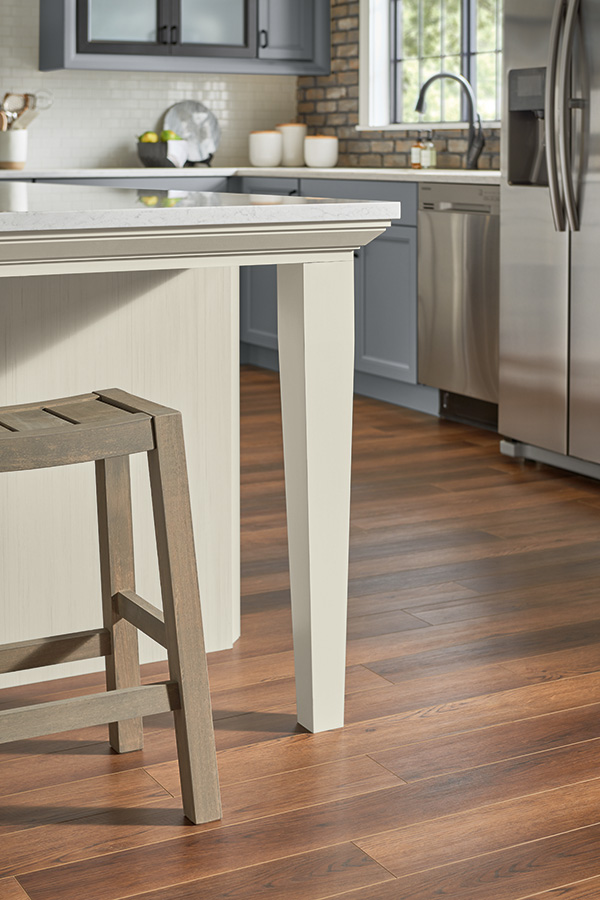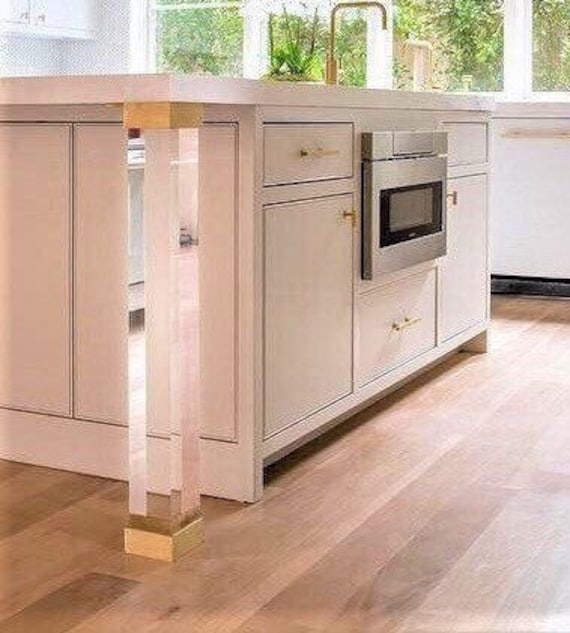Selecting the Ideal Kitchen Island Leg for Resilience and Capability
Selecting the Ideal Kitchen Island Leg for Resilience and Capability
Blog Article
The Significance of a Sturdy Kitchen Area Island Leg in Creating a Useful Cooking Area
A strong cooking area island leg serves as an essential element in establishing a practical cooking environment, giving essential assistance for both the countertop and different kitchen area tasks. As cooking areas progress into multifunctional locations for food preparation, dining, and interacting socially, the option of materials and style factors to consider for island legs comes to be progressively important.
Advantages of Sturdy Island Legs
Supplying important support, strong kitchen area island legs play a pivotal function in enhancing the capability and resilience of kitchen area islands - kitchen island leg. These legs not only birth the weight of the counter top and any type of extra things put on the island, however likewise add to the general stability of the framework. A well-supported kitchen area island makes certain that it remains upright and useful, also under hefty usage, which is particularly crucial in active cooking area atmospheres
In addition, tough island legs can improve the visual charm of the cooking area. They provide a solid framework that can enhance various style styles, from contemporary to typical. This flexibility enables property owners to tailor their kitchen islands according to personal taste while ensuring that the structural stability remains uncompromised.
In enhancement to their supportive role, durable cooking area island legs can also boost safety and security. A secure island reduces the danger of accidents triggered by wobbling or tipping, which is especially essential in households with kids or elderly people. Furthermore, strong legs can assist in a smooth flow of activities, enabling efficient meal preparation and social communications within the cooking area area. Eventually, buying sturdy cooking area island legs is crucial for a practical and aesthetically pleasing cooking location.
Materials for Kitchen Island Legs
When picking materials for kitchen island legs, longevity and visual charm are essential elements to think about,. One of the most common materials include hardwood, metal, and crafted timber, each offering unique benefits.
Wood, such as cherry, maple, or oak, is a traditional choice due to its toughness and classic beauty (kitchen island leg). It can stand up to considerable weight and is resistant to put on, making it optimal for high-use cooking area atmospheres. Furthermore, wood can be stained or repainted to enhance various kitchen styles
Metal legs, commonly crafted from stainless steel or functioned iron, give a modern-day and industrial appearance. They are unbelievably strong and can support considerable lots while being resistant to wetness and warm, which is beneficial in a cooking location. Metal legs can likewise be easily cleansed, improving their functionality.

Layout Factors To Consider for Stability
The selection of products for kitchen island legs straight affects the design considerations for stability. When creating a kitchen area island, it is critical to review the weight-bearing capability of the picked products. Heavier materials, such as solid wood or metal, commonly supply higher security, especially under the anxiety of everyday usage.
Additionally, the leg design must integrate appropriate geometry to enhance stability. A broader base increases the support area, decreasing the risk of tipping or wobbling. Factor to consider ought to likewise be provided to the elevation of the legs; disproportionate leg sizes can cause inequality, compromising the general security of the island.
Furthermore, the distribution of weight across the island is essential. Guaranteeing that the leg placement lines up with the heaviest elements, such as appliances and countertops, will certainly additionally boost stability.
Upkeep Tips for Long Life

Depending on the material of the legs-- whether timber, steel, or composite-- proper cleaning techniques should be used. Metal legs may need a light gloss to avoid rust and maintain their gloss.
Additionally, tightening up bolts and screws consistently can guarantee stability and stop wobbling. Consider reinforcing the legs with additional brackets or supports to enhance durability if the cooking area island experiences hefty usage. Last but not least, applying a protective finish or sealer can safeguard against wetness and spots, prolonging the life-span of the legs. By adhering to these maintenance suggestions, house owners can ensure their kitchen island legs remain practical and robust for many published here years to come.
Choosing the Right Leg Style
Routine maintenance makes sure that kitchen island legs continue to be practical and tough, but picking the right leg style is similarly essential for both appearances and support. The selection of leg style can considerably influence the overall style and harmony of your kitchen area.

Functionality is another crucial element. For circumstances, thicker legs or those with a sturdy base can support much heavier countertops and equipment, improving the island's energy. On the other hand, slender legs might produce a ventilated look, ideal for lighter layouts however possibly less helpful.
Verdict
In summary, the significance of strong kitchen island legs can not be overstated in the creation of a functional cooking location. These legs give important support, enhance stability, and add to the overall aesthetic of the kitchen. By thoroughly choosing proper products and styles, in addition to carrying out appropriate maintenance practices, the long you can try this out life and performance of cooking area islands can be made sure. Eventually, buying robust island legs is basic to attaining a secure and reliable cooking environment.
A strong cooking area island leg offers as an essential component in developing a functional food preparation atmosphere, providing essential support for both the countertop and numerous cooking area activities.Providing crucial support, sturdy cooking area island legs play a critical role in boosting the performance and resilience of kitchen islands. Ultimately, spending in tough kitchen island legs is vital for a useful and aesthetically pleasing cooking location.
Factor to consider should also be provided to the elevation of the legs; out of proportion leg sizes can lead to imbalance, jeopardizing the total stability of the island.
Wood legs supply heat and a classic appearance, while steel legs provide a industrial and modern feeling.
Report this page